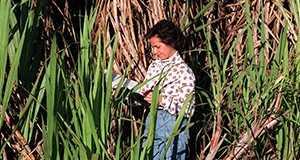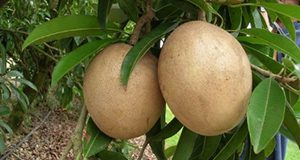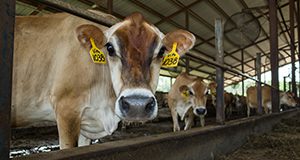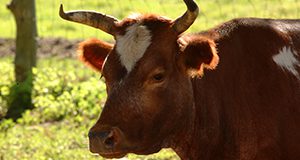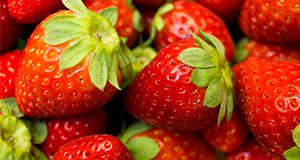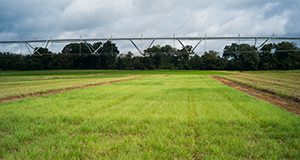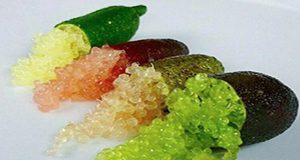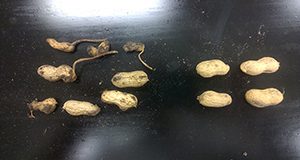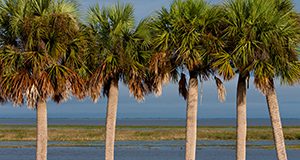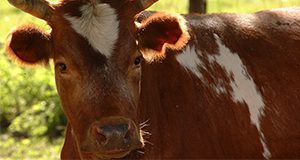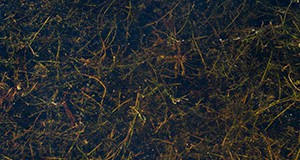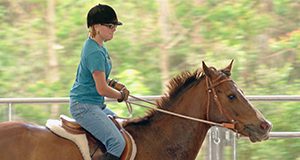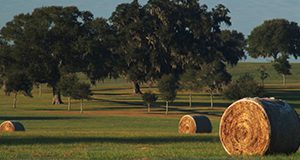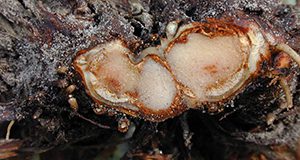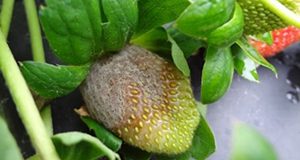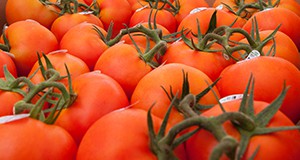CPCL 02-6848 and CPCL 05-1201 are emerging sugarcane cultivars in Florida. Both cultivars were released commercially in 2012 and were quickly adopted by local sugarcane growers because of high yields and moderate to high resistance against major sugarcane diseases in Florida. This 4-page fact sheet provides basic information and yield and disease information to assist growers in management of these cultivars. Written by Hardev Sandhu and Wayne Davidson, and published by the UF/IFAS Agronomy Department, March 2018.
http://edis.ifas.ufl.edu/sc104
Category: Agriculture
Cost Estimates of Producing Sapodilla in South Florida, 2017
This 6-page fact sheet written by Edward A. Evans, Fredy H. Ballen, Aditya Singh, and Jonathan H. Crane and published by the UF/IFAS Food and Resource Economics Department provides an estimate of the costs and returns associated with an established sapodilla orchard in south Florida. The information presented is based on a wide range of production practices collected through field interviews with growers and industry specialists and is intended as a guide to estimate the financial aspects of operating an established sapodilla grove. Please note that sapodilla has been assessed by the UF/IFAS Invasive Plants Working Group as potentially invasive in south and central Florida. It should not be planted in home landscapes or in groves near natural areas. Sapodilla plantings must be fenced, and the fruit must be moved in covered vehicles to prevent fruit being eaten by wildlife and the plant from infesting areas outside the grove.
http://edis.ifas.ufl.edu/fe1015
Economic Feasibility of Cooling Dry Cows: Findings and Spreadsheet
The negative effects of heat stress in lactating cows are well known, but only recent studies have explored those effects along with the full benefits of cooling dry cows. Recent work at the University of Florida has demonstrated the benefits of dry cow cooling on calf performance and cow health in the next lactation. This 5-page fact sheet discusses the economic losses from milk production due to heat stress, investment, utilities, maintenance, and feasibility analysis. Written by Fernanda Ferreira, Geoffrey Dahl, and Albert De Vries, and published by the UF/IFAS Department of Animal Sciences, March 2018.
http://edis.ifas.ufl.edu/an342
Assessment-based Pest Management of German Cockroaches
Assessment-based pest management emphasizes the importance of evaluating the intensity of a pest problem before treating the problem. This 10-page fact sheet written by F.M. Oi, E. Weeks, J. Jonovich, and D. Miller and published by the UF/IFAS Entomology and Nematology Department explains the strategy and includes a decision flow chart to provide an easy-to-follow overview on how a German cockroach problem can be assessed and successfully managed with specific guidance for each of four levels described in the fact sheet. The levels described constitute an escalation protocol that may approximate the tiers in a LEED (Leadership in Energy and Environmental Design) pest-management plan and may meet the requirements of some “green” pest-management certification programs, depending on level.
http://edis.ifas.ufl.edu/in1190
The Florida Bull Test 2016-2017
The 17th annual Florida Bull Test Sale was held on January 21, 2017 at the conclusion of the 2016-2017 Florida Bull Test. The test evaluated the performance potential and breeding soundness of bulls consigned to the program at the UF/IFAS North Florida Research and Education Center (NFREC). This new 9-page fact sheet discusses test procedures, assessment of feed efficiency, test rules and regulations, health requirements, and test results. Written by Luara B. Canal, G. Cliff Lamb, and Nicolas DiLorenzo, and published by the UF/IFAS Department of Animal Sciences, February 2018.
http://edis.ifas.ufl.edu/an341
CRISPR Gene Editing in Strawberry
Because cultivated strawberries are genetically complex, conventional breeding of strawberry can be difficult. Therefore, gene editing can be useful when developing strawberry varieties. This 3-page document discusses CRISPR gene editing in strawberry. Written by Seonghee Lee, Cheolmin Yoo, Kevin Folta, and Vance M. Whitaker and published by the UF/IFAS Horticultural Sciences Department, February 2018.
http://edis.ifas.ufl.edu/hs1315
What Is a Wireless Sensor Network?
A wireless sensor network (WSN) is a system designed to remotely monitor and control a specific phenomenon or event. This new 2-page fact sheet discusses the advantages that the WSN has over traditional stand-alone sensors and controllers, power consumption and conservation, and WSN technologies. Written by Clyde Fraisse, Janise McNair, and Thiago Borba Onofre, and published by the UF/IFAS Department of Agricultural and Biological Engineering, January 2018.
http://edis.ifas.ufl.edu/ae521
Finger Lime: An Alternative Crop with Great Potential in South Florida
Cylindrical Australian finger limes (Microcitrus australasica) taste like a combination of lemon, lime, and grapefruit, come in a rainbow of colors, and have a texture like caviar. Like other citrus fruits, finger limes are nutritious, low in calories, and vitamin-rich. So far in the United States only California grows finger limes commercially, but this 4-page fact sheet written by Aditya Singh, Edward Evans, Jeff Wasielewski, Manjul Dutt, and Jude Grosser and published by the UF/IFAS Food and Resource Economics Department makes the case that exotic, colorful finger limes would likely grow well in Florida, where they would appeal to hoteliers and restaurants and to adventurous, health-conscious consumers on the lookout for a delicious new fresh fruit snack to try.
http://edis.ifas.ufl.edu/fe1033
Management of Plant-Parasitic Nematodes in Florida Peanut Production
Nematodes, non-segmented roundworms, can cause serious yield suppression in peanut production. This 10-page fact sheet written by Zane J. Grabau and Donald W. Dickson and published by the UF/IFAS Department of Entomology and Nematology explains how to recognize a potential nematode problem in a peanut production, confirm it with an expert, and choose the best management tools to control the problem.
http://edis.ifas.ufl.edu/in1199
Growing Pomegranates in Florida: Establishment Costs and Production Practices
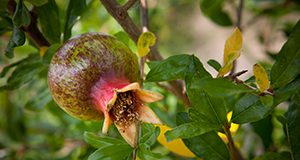
The study described in this 6-page fact sheet written by Feng Wu, Zhengfei Guan, and Gary Vallad and published by the UF/IFAS Food and Resource Economics Department provides a description of pomegranate production practices and preliminary cost estimates to inform investment and production decisions when growers look to diversify and grow pomegranate as a niche crop.
http://edis.ifas.ufl.edu/fe1024
Sampling Palms for Lethal Yellowing and Texas Phoenix Palm Decline Phytoplasmas
In Florida, palms are an economically important group of trees in the nursery and landscaping industries. Phytoplasma diseases of palms are a major concern because they infect a wide variety of these valuable ornamental palms, and they are lethal. Once symptoms appear, trees begin to decline, frequently rapidly, and can die in as few as 3 to 5 months. This 4-page fact sheet written by Brian W. Bahder and Ericka E. Helmick and published by the UF/IFAS Department of Entomology and Nematology describes how to sample palms for disease and how to submit samples to the Vector Entomology Lab. Includes a table listing equipment and supplies and protocol for sampling palm trunk tissue.
http://edis.ifas.ufl.edu/in1197
Comparison of Labor Costs between Floridian and Mexican Strawberry Industries
Florida has the largest winter strawberry production in the United States. In recent years, Florida's industry has faced growing competition from Mexico. This 5-page fact sheet written by Feng Wu, Zhengfei Guan, and Melvin Garcia-Nazaraiega and published by the UF/IFAS Food and Resource Economics Department compares labor costs between Florida’s and Mexico’s strawberry industries.
http://edis.ifas.ufl.edu/fe1023
Import Growth and the Impact on the Florida Strawberry Industry
The United States is the second largest producer of strawberries after China, and Florida, along with California, accounts for about 98% of the total US production. In recent years, the US strawberry industry has become increasingly concerned with competition from Mexico. This 3-page fact sheet written by Zhengfei Guan, Dong Hee Suy, Hayk Khachatryan, and Feng Wu and published by the UF/IFAS Food and Resource Economics Department describes the impact of imported strawberries on the Florida strawberry industry and explains how the industry can adapt to meet the challenge.
http://edis.ifas.ufl.edu/fe1022
Effective Use of Genomics in Commercial Dairy Farms
Genomic selection refers to selection decisions based on genomic-estimated breeding values. These genomic breeding values are calculated using genetic markers across the entire genome. This technology has revolutionized dairy cattle breeding globally. This new 4-page fact sheet discusses the effects of genomics on dairy sire selection. Written by Francisco Peñagaricano, and published by the UF/IFAS Department of Animal Sciences, February 2018.
http://edis.ifas.ufl.edu/an340
Efficacy of Herbicide Active Ingredients Against Aquatic Weeds
Weed control is often a critical component of aquatic vegetation management in Florida waters. While physical, mechanical, and biological controls are utilized where they are feasible, herbicides are the primary tool used to control many troublesome species. This document answers some common questions and provides efficacy information for all herbicide active ingredients labeled for aquatic use in Florida. Written by S. F. Enloe, M. D. Netherland, W. Haller, and K. Langeland, and published by the UF/IFAS Agronomy Department, revised February 2018.
http://edis.ifas.ufl.edu/ag262
Risk Management for 4-H Youth Development Work: Large Animals-Horses
This 13-page publication is one in the series Risk Management for 4-H Youth Development Work. It addresses the risks involving horses at 4-H events. Written by Saundra TenBroeck, Wendy DeVito, Dale Pracht, Chad Carr, Brittani Kirkland, and Georgene Bender and published by the UF/IFAS 4-H Youth Development Department, February 2018.
http://edis.ifas.ufl.edu/4h383
How Much Does Bad Hay Cost a Beef Cattle Producer?
Everyone likes a good bargain, but when it comes to hay, low price often equates to low nutritional value. Because hay is often sold on a large round-bale basis, savings from the good bargain can decrease substantially if there is a negative impact on the cow herd nutritional program. This 4-page fact sheet discusses intake limitations, energy limitations, protein limitations, examples of hay quality, and bad hay’s impact on cow body condition. Written by Matt Hersom and Todd Thrift, and published by the UF/IFAS Department of Animal Sciences, February 2018.
http://edis.ifas.ufl.edu/an339
Charcoal Rot of Strawberries Caused by Macrophomina phaseolina
Charcoal rot is caused by Macrophomina phaseolina and has become more prevalent in Florida strawberry fields since methyl bromide was phased out. This 4-page publication describes the symptoms, development, and control of charcoal rot in strawberry fields. Written by N. A. Peres, J. S. Baggio, and J. C. Mertely and published by the UF/IFAS Department of Plant Pathology, February 2018.
http://edis.ifas.ufl.edu/pp161
Botrytis Fruit Rot or Gray Mold of Strawberry
Botrytis fruit rot (BFR), also known as gray mold, is caused by the fungus Botrytis cinerea and is one of the most important diseases of strawberry in Florida and worldwide. This 4-page document describes the symptoms and management of BFR among strawberry plants. Written by J. C. Mertely, M. S. Oliveira, and N. A. Peres and published by the UF/IFAS Department of Plant Pathology, February 2018.
http://edis.ifas.ufl.edu/pp152
CRISPR: A Technical Breakthrough for Tomato Research
CRISPR is a contemporary biological technology that has attracted the interest of both the science community and the general public. This 4-page article discusses why tomato researchers are interested in CRISPR, what tomato traits have been targeted by CRISPR, and potential applications of CRISPR for tomato genetics and breeding. Written by Tong Geon Lee and published by the UF/IFAS Department of Horticultural Sciences, February 2018.
http://edis.ifas.ufl.edu/hs1314
